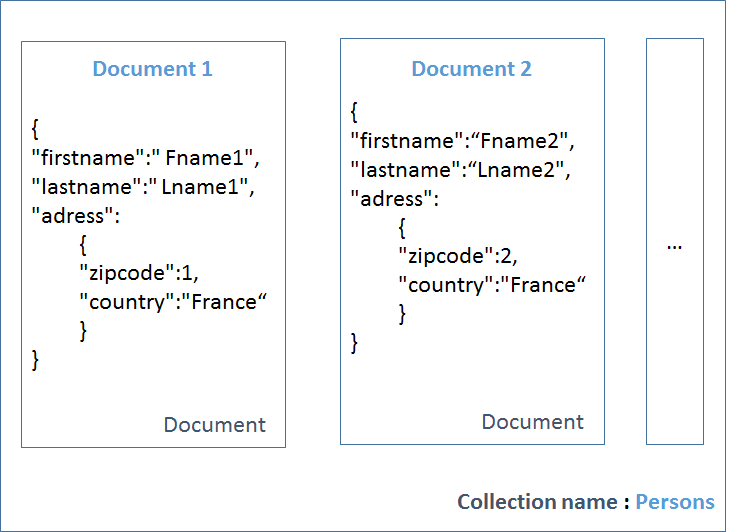Plan
- Part 1 : introduction
- Part 2 : Implementation of server side
- Part 3 : implementation of client side
Introduction
The purpose of these series of articles is to explain how we can create a CRUD web application using angularjs framework, nodeJs and the SGBD MongoDB.At the beginning of this article, we will talk about the overall architecture of this application, then we will define what will be the prerequisite for better comprehension of different steps.
Using the code
I) Web Application Architecture
The following diagram gives an overall view of our application and illustrates the various exchange between modules.
II) Prerequist
To better understand the next chapters, we will do a brief reminder about thinks that you should know :1) AngularJs
AngularJS is a structural framework for dynamic web apps.You can see more documentation about it on the previous article Create a web site using AngularJS, ASP.net MVC, web api - PART 1 : Introduction.
2) NodeJs
NodeJs is very powerful javascript-based framework/plateform built on Google Chrome's Javascript V8 Engine. It is used to develop I/O intensive web applications like video streaming sites, single-page applications, and other web applications.NodeJs is a server application, is was developed by Ryan Dahl in 2009.
In what follows, I relied on this api documentation
Environnement setup
to install NodeJs in your machine, you should download it first from nodeJs Web Site.to make sure every think that run succeffully :
a) open your nodejs command prompt :
b) write some code :
Examples
the below examples, will help you to good understand the next chapter in wich we talk about the implementation of the server side usingnodejs.a) Create Hello world- create a helloworld.js file on your machine and write this code :
console.log("Hello wordl !");
- run it using node.js command prompt
b) Create Server- create a js file named
server.js
//Import required module
var http = require("http");
//create local server that listen on 8081 port
http.createServer(function (request, response) {
// Send the HTTP header
// HTTP Status: 200 : OK
// Content Type: text/plain
response.writeHead(200, {'Content-Type': 'text/plain'});
// Send the response body as "Hello World"
response.end('Hello World\n');
}).listen(8081);
// Console will print the message
console.log('Server running at http://127.0.0.1:8081/');
- run it using node command prompt
- Make a request to nodejs server
c) Installing modules using npm :- What is NPM (Node Package Manager)?
- command line
npm install <Module Name>
d) Create a restfull web services :- What is REST architecture ?
REST is web standards based architecture and uses HTTP Protocol. that
allow client to access to resource in server side for modification and
reading via HTTP protocol. each ressources is identified by url and
global ID.
the representation of a resource returned it can be text, XML or JSON (the popular one).
for more
2) create a restfull server
3) testing request
open the following url :

MongoDB stores all documents into collections.
the representation of the stored documents is on BSON (Binary json data).
the following diagram defines how data are stored into MongoDB :


the precedent command create a service with a default name : MongoDB.
To see more about MongoDB, you can follow this link.
the representation of a resource returned it can be text, XML or JSON (the popular one).
- Coding
npm install express
this command install the famous nodejs web framework module called
express. for more
knowledge about the express framework you can visit this link : Express.js official site2) create a restfull server
//import required module
var express = require('express');
//instantiate
var app = express();
//build our restful service
app.get('/getHWMsg', function (req, res) {
res.end('Hello World');
});
//start server
var server = app.listen(8081, function () {
console.log("Server is listening at http://127.0.0.1:8081/")
});
3) testing request
open the following url :
http://127.0.0.1:8081/getHWMsg
in your browser and you will see the bellow result :3) MongoDB
MongoDB is an sgbd oriented documents, and it does not require a predefined data schema.
MongoDB stores all documents into collections.
the representation of the stored documents is on BSON (Binary json data).
the following diagram defines how data are stored into MongoDB :

1) Environnement setup : - download MongoDb from this link : MongoDB download
- Create target MongoDB folder, I created : C:\nodejsExample\mongoDb
- Create target MongoDB Data folder, I created : C:\nodejsExample\mongoDb\data
- Add MongoDB bin folder (you can find it in MongoDB installation folder) to the path environment variable
- create MongoDB configuration file, i created : C:\mongoDb\nodejsExample\mongod.cfg that contains the following lines :
systemLog:
destination: file
path: C:\nodejsExample\mongoDb\data\log\mongod.log
storage:
dbPath: C:\nodejsExample\mongoDb\data\db
- install the mongodb service :
- run mongodb service by tapping on command line the following command:
<span class="n">net</span> <span class="n">start</span> <span class="n">MongoDB</span>
- check the log file to view the url of your service, in my case i found : mongodb://localhost:27017/db
- Think about what development language you plan to use :
npm install mongodb
To see more about MongoDB, you can follow this link.
No comments:
Post a Comment